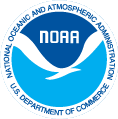W1 | W2 | W3 | W4 | W5 | W6 | W7 | W8 | W9
Ecological and Ecosystem Models for Ecosystem-based Management in the Chesapeake
Lead Conveners:
- Howard Townsend, NOAA Chesapeake Bay Office
- Rich Fulford, University of Southern Mississippi
Workshop Agenda & Schedule
Papers & Presentations
- All papers, posters, and presentations for this workshop can be found on the CheMS Presentation page.
Description
Traditionally, living marine resources in the Chesapeake Bay have been managed with information on stock sustainability derived from single-species stock assessment models (based on population dynamics). In recent years, an increased awareness of the importance of the whole ecosystem context of living resources has led to the need for improving our understanding of ecosystem functions. In turn, this has led to the development of a range of approaches to modeling ecological interactions in the Chesapeake. In this workshop we will survey models that have been developed for living resource ecosystem-based management.
The symposium is intended to facilitate the development of an inventory of models and data sets, and stimulate collaborative research on data processing and modeling. The resulting inventory of modeling tools and data will be made available through the CCMP web pages, in attempt to stimulate cross-pollination across modeling teams and paradigms and encourage future community modeling efforts. It is our hope that this will lead to the development of more comprehensive and integrated modeling tools for the Bay and its watershed, as well as for other watersheds around the country.
A position paper outline is provided below. The themes that we plan to explore in this session are listed below. The session organizers have attempted to classify the current types of living resource models being used in the region. Please review this material and gear your talk towards addressing some of these themes.
Position Paper – initial outline
Overview and position on the current state of ecosystem modeling for living resource management
Outline model types (adapted single species models vs. multispecies approaches, mechanistic vs. data-driven models, process models vs. prediction systems). Ecosystem models for the management of living resources come in a variety of forms, but can be broadly categorized based three characteristics: single species vs. multispecies origin, mechanistic vs. data-driven, process vs. prediction.
The maturation process of ecosystem modeling for management of living resources has occurred along several trajectories each with its own origins and a resulting set of priorities. (i.e., adaptation of SS assessment models, linked hydrographic-biological models, data-driven statistical models). The easy availability of data and the concentration of modeling expertise has made the Chesapeake Bay ecosystem a potential template for moving beyond these separate trajectories towards a more cohesive framework based on suites of models that are adapted to achieve one of two broad goals: (1) model comparison and (2) model concatenation.
- Model comparison is the side by side comparison of similar model output from multiple models resulting from parallel model simulations based on common model input. The comparison of common output from common input can facilitate a more robust examination of ecosystem response to particular management actions.
- Model concatenation is the linking of structurally similar models into a model suite capable of generating a set of output that is reflective of the unique dynamics of each unit model but allows for a synergistic result not possible using the models separately. Concatenation allows for an examination of ecosystem response to multiple management actions that exploits the strengths each model component. Different model types are optimal for each objective and it is important to identify potential roadblocks early.
Model comparability
Model comparison is a strong but indirect tool for exploring the dynamics of a particular issue from several perspectives. Independent modeling efforts carry the bias of their designer and origins and so the comparison of output from models with different origins but similar output objectives can allow for more defendable results to be used for decision making. However, different models can yield widely different results based on similar input simply due to differences in input scale, model structure, or the inclusion of different levels of functional detail. For instance, an examination of the ecosystem effects of oyster restoration based on a water quality model will focus on top down effects of oysters such as phytoplankton consumption, retention and sequestration of solid particles, and resulting changes in nutrient levels and water chemistry. In contrast a food web model that incorporated oyster dynamics might also examine ecosystem response to restoration but would focus on upward energy flow along important trophic pathways and lateral effects on other primary consumers. While these two model analyses have similar objectives it is difficult to directly compare the result due to differences in model structure and output.
Model concatenation
The linking of models together in a manner that allows for supportable model output from the model suite requires that the various model components are compatible with regards to input/output type, spatial and temporal scale, and design intent. Most of these features are established during model development so that particular model types may be inherently well or poorly suited for concatenation. For instance, data driven models are typically applied only to the temporal and spatial scope of the original dataset while mechanistic models may be more generally applied if the underlying assumptions are well founded and general. This makes the concatenation of such model types potentially problematic.
Summary and Conclusions
Where are we going with Living Resource Modeling in the region? What do we need to get there? Linked models? Data/data management issues?
Session Themes
Model applications
- Tactical decision support for resource management decisions
- Strategic planning for resource use
- Hypothesis-testing – hypothesis exploration
- How to best deal with uncertainty for management decisions
Model comparability (side by side)
- Mechanistic – Statistical
- i-state – p-state
- multiple temporal scales
- multiple spatial scales
- functional/taxonomic scale
- Same questions from a different angle
- Simpler questions but deeper
Model connectivity (end to end)
- Coupled physical and biological and economic models
- Connected across multiple scales
- Ecosystem throughput nutrients to dollars
- More complex problems
- Layered approach to the problem
| Model Description | Type | SS/MS |
|---|---|---|
| 1. Overview talk based on our synthesis of topics | summary | -- |
| 2. Single species stock assessment compliments and contributes to EBFM (e.g., EwE) | Process | SS |
| 3. Linked physical-allometric scaling model based on existing model in Pacific MS | Mechanistic | MS |
| 4. Prediction system based on remotely sensed temperature data and cholera (statistical model) | Statistical, Prediction |
SS |
| 5. HAB prediction system based on ROMS and a ANN-based habitat model for K. veneficum | Statistical, Prediction |
SS |
| 6. Adapted SS stock assessment model with variable M based on chl-a and catfish forcing functions (data driven 1975-2004) | Statistical | SS |
| 7. Spatially explicit Bioenergetics formed as a GRP model for Bay anchovy (sensu Brandt) | Mechanistic | SS |
| 8. Linked EwE and CBWQL model to examine role of water quality and overfishing on menhaden | Process | MS/WQL |
| 9. Multispp-Bioenergetics combined with spatially explicit estimates of species biomass and diet (large dataset statistical analysis) | Mechanistic, statistical, spatially explicit |
MS |
| 10. Optimization model for oyster restoration (larval dispersion, oyster growth, economics, costs of restoration) | Mechanistic, Optimization |
SS |
| 11. Multispecies bioenergetics model used for comparison of ecosystem effects of multiple management actions | Mechanistic | MS |
| 12. Comparison of multiple model results for the effect of hypoxia on fish populations. (3-layer IBM, IBM food web model [ctenophores, fish eggs, fish larvae], IBM-3D water quality model) “We are not well suited to dealing with threshold responses and regime shifts” | Mechanistic, comparative |
SS/MS |
Agenda
| Time | Title | Presenter |
|---|---|---|
| 9:30a | Overview talk based on our synthesis of topics | Howard Townsend |
| 10:00a | Single Species Stock Assessment Models in Ecosystem-Based Management | Michael Wilberg, UMCES CBL (wilberg@cbl.umces.edu) |
| 10:30a | A mid-trophic ladder for the Chesapeake Bay | Raghu Murtugudde, ESSIC, University of Maryland (ragu@essic.umd.edu) |
| 11:00a | Break | |
| 11:30a | Implementation of a harmful algal bloom prediction system in Chesapeake Bay | Christopher Brown, NOAA - CICS ESSIC (Christopher.W.Brown@noaa.gov) |
| 12:00p | Human Pathogen Prediction System in Chesapeake Bay | Guillaume Constantin de Magny, UMIACS (magny@umiacs.umd.edu) |
| 12:30p | A Head-of-Chesapeake Bay Yellow Perch Assessment that Includes Ecosystem Effects | Jim Uphoff, MD DNR Fisheries Service (juphoff@dnr.state.md.us) |
| 1:00p | Lunch Break | |
| 2:00p | Habitat suitability modeling for bay anchovy in Chesapeake Bay | Xinsheng Zhang, NOAA Cooperative Oxford Laboratory (Xinsheng.Zhang@noaa.gov) |
| 2:30p | Perspective analyses and future projections of major fisheries under different water quality and fisheries management actions in Chesapeake Bay | Hongguang Ma, NCBO/Versar (Hongguang.Ma@noaa.gov) |
| 3:00p | Consumption by demersal fish on the Northeastern U.S. Continental Shelf: The effects of diet, habitat and location | Elizabeth Methratta, Versar (LMethratta@versar.com) |
| 3:30p | Break | |
| 4:00p | Optimization model for oyster restoration (larval dispersion, oyster growth, economics, costs of restoration) | Elizabeth North, UMCES HPL (enorth@hpl.umces.edu) |
| 4:30p | Analysis of ecosystem response to management using a multi-species bioenergetics model | Richard Fulford, University of Southern Mississippi (Richard.Fulford@usm.edu) |
| 5:00p | Modeling hypoxia effects on Chesapeake Bay fish | KennethRose, LSU (karose@lsu.edu) |
| 5:30p | Wrap-up and plan for position paper |
Papers, Posters, & Presentations Submitted
Coming soon!




